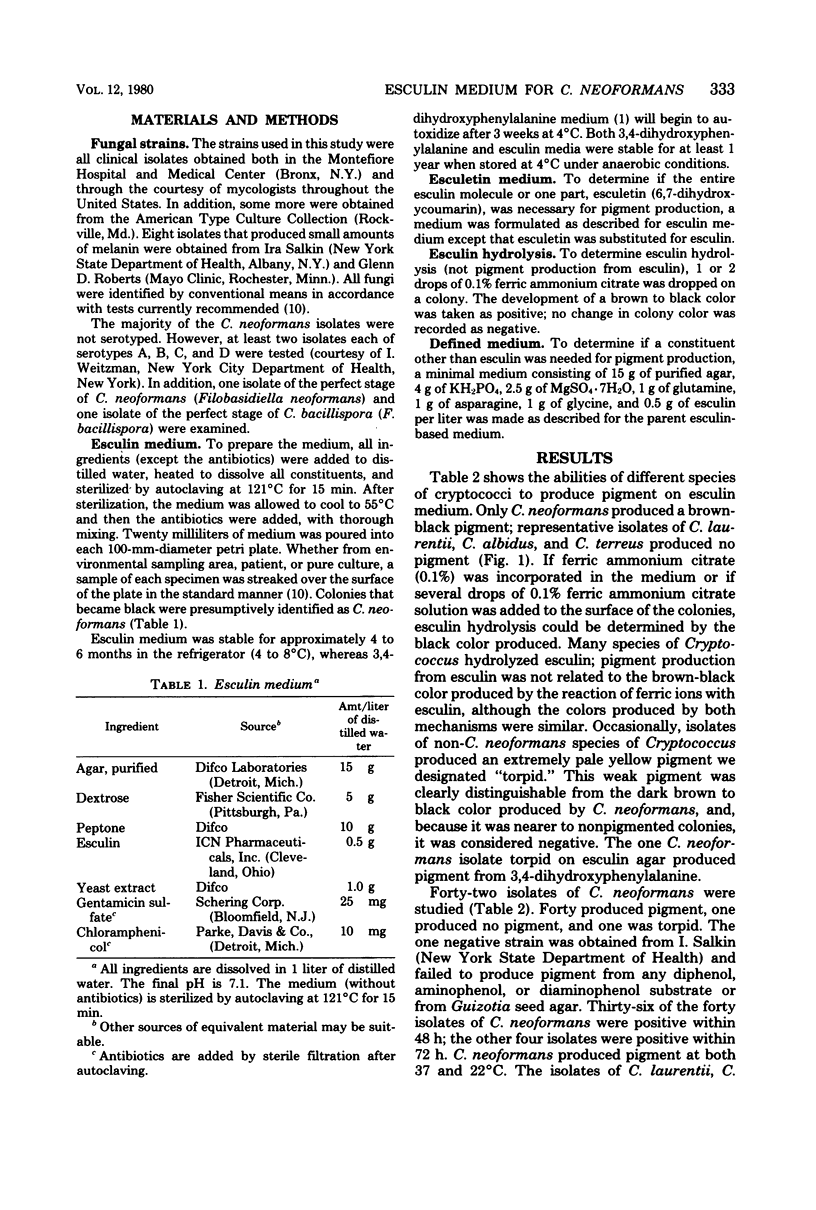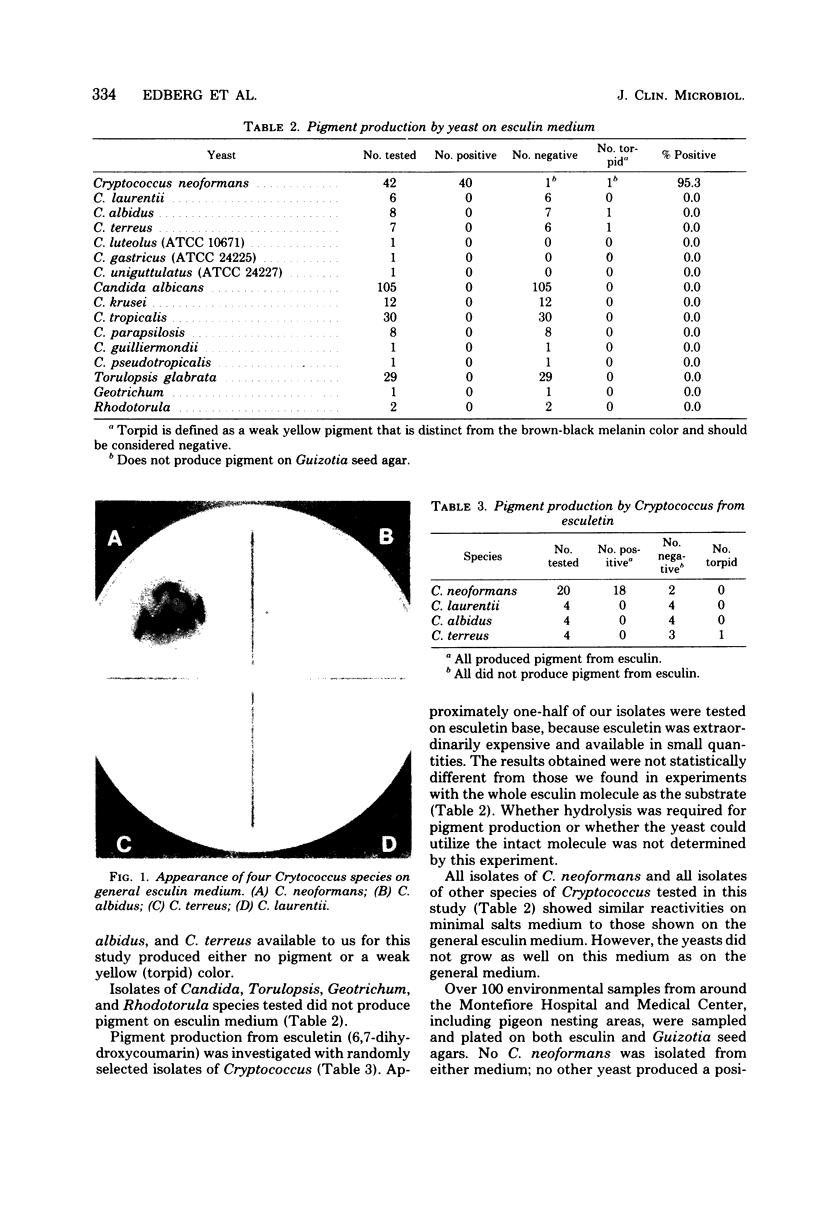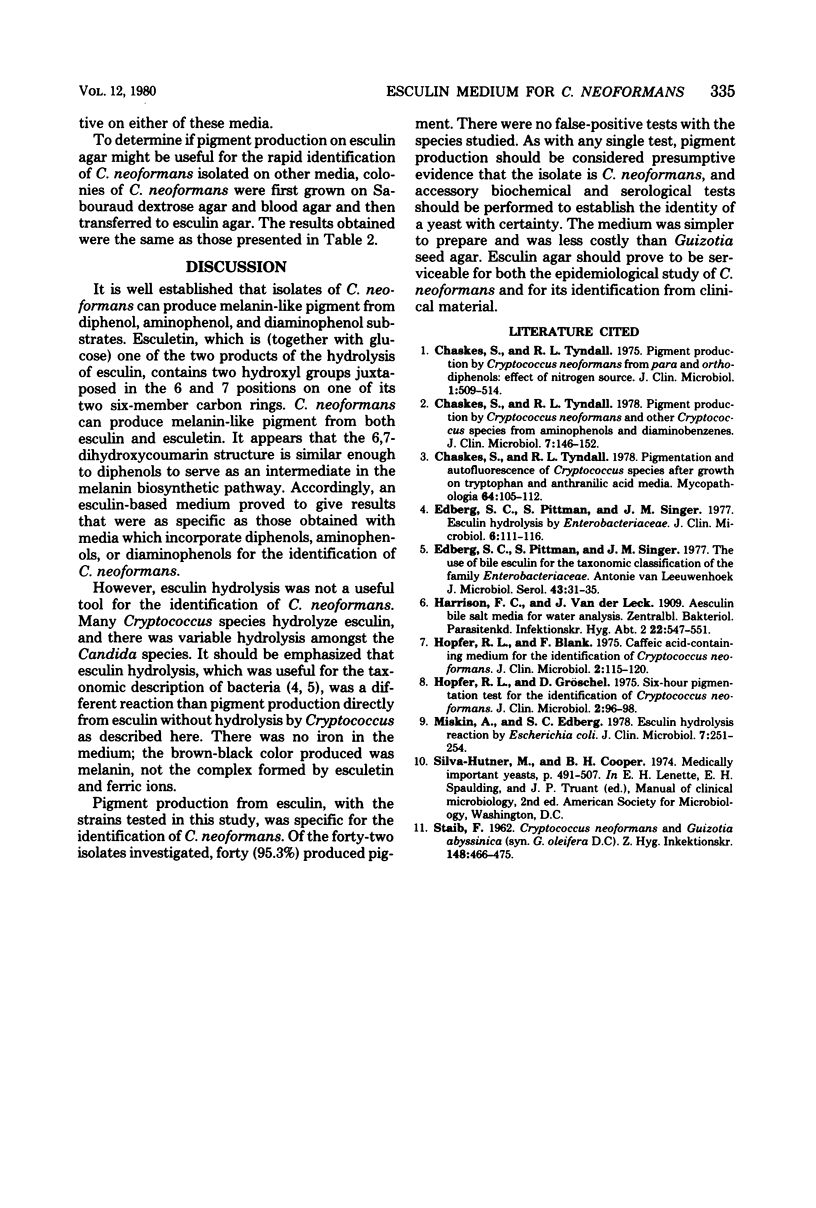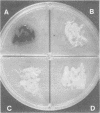Abstract
A simple medium was developed, using esculin as the substrate, for the isolation and identification of Cryptococcus neoformans. C. neoformans produced a brown-black pigment on the medium; all other yeasts produced no pigment or were light yellow. Esculin is beta-glucose-6,7-dihydroxycoumarin. C. neoformans produced pigment because the 6,7-dihydroxycoumarin component of the esculin molecule was converted to a melanin-like pigment. We think the reaction was similar to the conversion of diphenols, aminophenols, and diaminobenzenes to melanin. Laboratory studies with isolates of C. neoformans, C. albidus, C. luteolus, and C. terreus and representatives of the genera Candida, Torulopsis, Geotrichum, and Rhodotorula, plus environmental field studies, demonstrated that over 95% of C. neoformans isolates were correctly identified, whereas all other fungi were excluded. Esculin agar was a sensitive, specific medium for the isolation and identification of C. neoformans. It was inexpensive and had a long storage life.
Full text
PDF



Images in this article
Selected References
These references are in PubMed. This may not be the complete list of references from this article.
- Chaskes S., Tyndall R. L. Pigment production by Cryptococcus neoformans and other Cryptococcus species from aminophenols and diaminobenzenes. J Clin Microbiol. 1978 Feb;7(2):146–152. doi: 10.1128/jcm.7.2.146-152.1978. [DOI] [PMC free article] [PubMed] [Google Scholar]
- Chaskes S., Tyndall R. L. Pigment production by Cryptococcus neoformans from para- and ortho-Diphenols: effect of the nitrogen source. J Clin Microbiol. 1975 Jun;1(6):509–514. doi: 10.1128/jcm.1.6.509-514.1975. [DOI] [PMC free article] [PubMed] [Google Scholar]
- Chaskes S., Tyndall R. L. Pigmentation and autofluorescence of Cryptococcus species after growth on tryptophan and anthranilic acid media. Mycopathologia. 1978 Oct 16;64(2):105–112. doi: 10.1007/BF00440970. [DOI] [PubMed] [Google Scholar]
- Edberg S. C., Pittman S., Singer J. M. Esculin hydrolysis by Enterobacteriaceae. J Clin Microbiol. 1977 Aug;6(2):111–116. doi: 10.1128/jcm.6.2.111-116.1977. [DOI] [PMC free article] [PubMed] [Google Scholar]
- Edberg S. C., Pittman S., Singer J. M. The use of bile - esculin agar for the taxonomic classification of the family Enterobacteriaceae. Antonie Van Leeuwenhoek. 1977;43(1):31–35. doi: 10.1007/BF02316207. [DOI] [PubMed] [Google Scholar]
- Hopfer R. L., Blank F. Caffeic acid-containing medium for identification of Cryptococcus neoformans. J Clin Microbiol. 1976 Aug;2(2):115–120. [PMC free article] [PubMed] [Google Scholar]
- Hopfer R. L., Gröschel D. Six-hour pigmentation test for the identification of Cryptococcus neoformans. J Clin Microbiol. 1976 Aug;2(2):96–98. [PMC free article] [PubMed] [Google Scholar]
- Miskin A., Edberg S. C. Esculin hydrolysis reaction by Escherichia coli. J Clin Microbiol. 1978 Mar;7(3):251–254. doi: 10.1128/jcm.7.3.251-254.1978. [DOI] [PMC free article] [PubMed] [Google Scholar]



